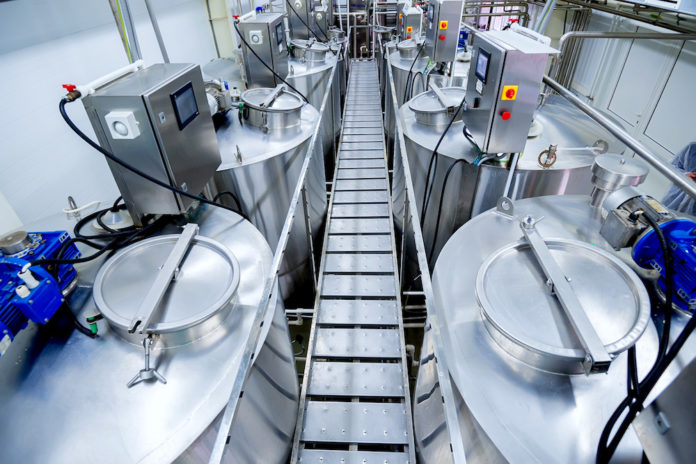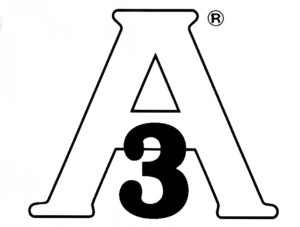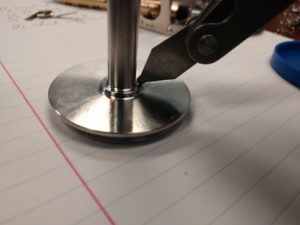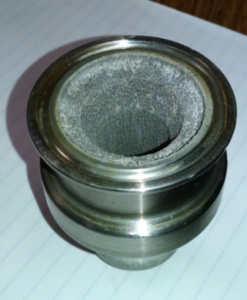
Imagine that you are on your first Level 5 whitewater rafting trip. Without a doubt, there is risk involved. But, since you are an adventuresome, but cautious, thrill seeker, you want to know that the equipment was designed and constructed to handle the river. Plus, you want the guide to be experienced, knowledgeable, and trained. Since you don’t do this every day, you most likely will give it some thought.
Most consumers don’t think about the manufacturing process or the equipment used every time they eat or drink. But, in the event of an unfortunate breach such as an allergen or foodborne disease contamination, or foreign material in the product, they will want to know why and where it happened.
 In the U.S., there is an alphabet soup of regulatory agencies that have rules, guidelines, inspectors, and more to keep all stages of the food chain as safe as possible. Working with that system, 3-A Sanitary Standards, Inc. (3-A SSI) maintains a large inventory of design criteria for the equipment and processes used to manufacture products under sanitary conditions. According to 3-a.org: “Voluntary use of the 3-A Symbol on dairy and food equipment conveys assurance that equipment meets sanitary standards, provides accepted criteria to equipment manufacturers for sanitary design, and establishes guidelines for uniform evaluation and compliance by sanitarians.”
In the U.S., there is an alphabet soup of regulatory agencies that have rules, guidelines, inspectors, and more to keep all stages of the food chain as safe as possible. Working with that system, 3-A Sanitary Standards, Inc. (3-A SSI) maintains a large inventory of design criteria for the equipment and processes used to manufacture products under sanitary conditions. According to 3-a.org: “Voluntary use of the 3-A Symbol on dairy and food equipment conveys assurance that equipment meets sanitary standards, provides accepted criteria to equipment manufacturers for sanitary design, and establishes guidelines for uniform evaluation and compliance by sanitarians.”
“3-A SSI doesn’t tell people how to make something,” said Tim Rugh, 3-A SSI’s executive director. “We set what is minimally acceptable when it comes to how equipment is made such as the alloy, weld quality, seal material, and component requirements. The standards not only allow regulators to better know what is acceptable, they provide for a competitive edge.”
Where did 3-A SSI come from?
If you heard the term 3-A and thought it applied only to dairy, you would have been correct. Key here is “would have.”
According to 3-A SSI, the first standards for the hygienic design of equipment used in the dairy industry were introduced in the 1920s. These standards became known as “3-A standards” for the three interest groups that cooperated to improve equipment design and sanitation: regulatory sanitarians, equipment fabricators ,and processors.
Fast forward to 2002, when 3-A SSI was incorporated as a not-for-profit corporation focused on advancing food safety through hygienic equipment design. At this time the organization’s structure and standards procedures changed. Plus, the focus broadened from dairy to encompass any industry that needs to process under sanitary conditions.
“There is no doubt that we came out of the dairy industry,” Rugh said. “But today we are very different. Our sales reports let us know where standards are being purchased, and we see they are used widely outside of dairy.”
The change is driven by the fact that processors require a higher level of equipment standards. “Whether it is a pet food manufacturer needing to meet FSMA requirements or pathogen control in make-up and shampoo, all of the reasons built into the standards for dairy make them relevant for non-dairy,” Rugh added.
| Today’s 3-A SSI maintains a large inventory of design criteria for equipment and processing systems developed using a modern consensus process based on ANSI requirements to promote acceptance by USDA, FDA, and state regulatory authorities. 3-A SSI oversees the 3-A Symbol Authorization program and other voluntary certificates to help affirm the integrity of hygienic processing equipment and systems. And 3-A SSI provides extensive Knowledge Resources to support the training and education needs in the rapidly changing food, beverage, and pharmaceutical industries. |
In addition to being adopted by many different industries, the 3-A SSI standards are well established worldwide. In 2019, the highest year ever for new symbol applications, one-third of the standards were issued to U.S.-based companies with the remaining portion to companies located outside of the country.
“Equipment is manufactured worldwide, and companies need to standardize purchasing specifications,” Rugh said. “We currently have symbol holders in 28 countries. 3-A is not just a U.S. brand, but international in scope.”
Why have standards?
So, you are headed down that Level 5 river in a piece of rubber filled with air. Fun, right? Yes, as long as the raft was constructed based on the standards – minimal requirements – that make the vessel safe for the conditions. It’s easy to see why standards are a good thing!
In the U.S. the dairy industry has higher design and construction requirements than other food and beverage processes. Equipment in dairy plants needs to meet the Pasteurized Milk Ordinance (PMO), which is now in line with 3-A: “Equipment manufactured in conformity with 3-A Sanitary Standards and Accepted Practices complies with the sanitary design and construction standards of this Ordinance.”
“In dairy it is expected, in others it is available, but any food or beverage processor would be well advised to use 3-A certified equipment,” said Gabe Miller, owner Pi-FS, LLC, and a 3-A SSI Certified Conformance Evaluator (CCE). “Then there is no question if the equipment design is sanitary and that it is cleanable and inspectable.”
Another benefit to manufacturers that certify equipment with 3-A SSI is the ability to market the 3-A symbol. “Processors can easily search the 3-A database of current certificates,” Rugh said. “This is the first place to start to ensure that the equipment has been certified through 3-A.”
Navigating the 3-A certification process
Certifying sanitary process equipment to 3-A standards takes work, time, and diligence. This is to be expected, but 3-A SSI wants the process to be as easy as possible.
“We want the manufacturer to do their own background investigation, which with our resources they can do easily,” Rugh said. “And then contact and work with a CCE so when it comes to the inspection there are no surprises.”
Following the right course of action makes the process flow as smoothly as possible.
“Think of the process like a whitewater rafting trip,” Miller said. “You need to have a plan and know what is around the next corner to best navigate the course.”
Miller shared best practices for working through the voluntary 3-A standards process. His tips come from years of experience as a CCE based on what he has seen that works, and what doesn’t work.
1. Identify the standard

This may sound simple, but there are 100+ standards and some may be similar, and some equipment could fall under more than one standard. “I very often get involved at this point because people need to know which standard(s) applies,” Miller said.
The equipment fabricator needs to register or login to their 3-A SSI account and purchase a copy of the standard(s), become familiar with standard(s), and visit the 3-A Knowledge Center to learn more about general the requirements of hygienic design. “Taking the time to educate yourself and your team sets the foundation to work from through design to construction,” Miller noted.
2. Select a CCE to work with and provide them with drawings for preliminary review
At this point the CCE can identify if – on paper – the equipment complies with the standard(s). “Most CCEs will do a design review,” Miller said. “And I always advise clients to do this before they start fabrication. It is important to note that CCEs can’t do design work, but we can advise what to do if the drawings do not meet the standard.”
3. If advised by the CCE, the fabricator needs to make any needed design revision
4. Purchase materials and components
While this may sound straightforward, is a very important step.
“Using a filling machine as example, make sure that the material in product contact has the required material certs for rubber, plastic, etc., and that they conform to criteria in standard,” Miller said. “Also, any components that are purchased such as flow meters, pumps or valves should also have 3-A certification. Otherwise the fabricator may build a machine that could create issues for them later in the process.”
5. Once the equipment is built, the CCE visits the main assembly plant for the Third-Party Verification (TPV) inspection and completes a TPV report, including a review and sign-off of every clause in the applicable 3-A standard.
“I [and the other CCEs] travel all over the world to go wherever the equipment is fabricated,” Miller said. “Once there, a report is prepared on surface finish, materials, and anything that should have been part of the design.”
6. A key component of the TPV at the manufacturing site is to verify that an Engineering Design Technical and Construction File (EDTCF) has been made
This is a compilation of all documents that verify what testing was done, material certs, and all relevant paperwork. The file can be digital, but it must have a list of all documents in a table of contents so that they can easily be retrieved.

Miller recently came across an instance that proves why the EDTCF is so valuable. “There was a case where two of 50 fittings corroded,” Miller said. “Upon investigation it was found that these two fittings were made of the wrong material and the EDTCF provided the documentation for the fabricator to go back to the supplier and find out why.”
7. Once all of the boxes have been checked, the CCE files the TPV report to the 3-A SSI under the fabricator’s account
At this point 3-A SSI staff reviews the submission to ensure that all steps have been completed. “We don’t review the documents — that is the job of the CCE,” said Eric Schweitzer, 3-A SSI’s director of standards and certification. “We ensure that all of the application requirements have been met.”
8. After 3-A SSI approves the TPV report, the fabricator receives notice to complete the 3-A application online
The certification is automatically issued after the application and license fees are paid. To maintain the 3-A certification, the fabricator needs to pay an annual fee and have the equipment reinspect every five years.
“This involves going back and verifying that the process is the same, the material certs are current and the equipment still conforms to 3-A standards because over time things can change,” Miller said.
“At first this [whole process] can sound complicated,” Miller continued. “But it really isn’t that difficult when you break it down.”
Setting the standard for CCEs
“Before 2002, the CCE program wasn’t in place and the system operated on a self-certification basis,” Rugh said. “Fabricators made their own decisions as to whether or not the equipment complied with the standard. There was a lack of unity in interpreting and applying the standards.”
To remedy this, 3-A SSI gradually introduced the TPV program and as of 2007 anyone applying for a new or renewed certificate has to meet the TPV requirements. “By proving that the equipment meets all the requirements to a third party takes subjectivity out of the process,” Rugh added.
The third party in the 3-A certification process – the CCE – plays a major role. So what standards do they need to meet?
3-A SSI holds its CCEs to high standards and has set requirements, including: “Meeting specific criteria for basic education and industry experience in a setting where 3-A Sanitary Standards were applied. They have also demonstrated high verifiable work experience and high professional integrity. Every CCE has also passed a comprehensive written exam testing their knowledge of principles of sanitary equipment design for 3-A equipment, the ability to interpret engineering drawings pertaining to manufacturing equipment and instrumentation for the food processing industries, and the ability to review and evaluate complex processes.”
“We [CCEs] go by a code of ethics in that we are only permitted to TPV equipment that we are familiar with,” Miller said “If a person becomes a CCE and is asked to do a TPV on an homogenizer, for example, and they’re not competent to evaluate it, they are obligated to decline.”

To help ensure that the CCEs have a common base so they are consistent on how they look at equipment, and to ensure that their knowledge of sanitary equipment design and processing standards remain current, the CCEs have ongoing requirements including continuing education, regular teleconferences, and an annual collective meeting.
Miller echoed the fact that the CCEs work together: “I had a call from a fabricator that wasn’t happy with another CCE’s decision asking me to become involved. I told them that my first call would be to the original CCE and that I would do it but my opinion would probably be the same.”
In the event that a fabricator doesn’t agree with a CCE’s review, 3-A SSI has an Interpretation Committee that steps in. “A fabricator can say ‘we think the equipment conforms’ when the CCE doesn’t agree,” Miller said. “At that point the committee makes the call. It is a self-regulating system.”
Setting the standards
Standard development is ongoing as 3-A SSI responds to the latest innovations, with most of the standard development work handled by 14 Working Groups (WGS). Each WG consists of volunteers representing fabricators, end users, and sanitarian stakeholder groups.
“We want people to know that our doors are open,” Rugh said. “People come into work groups meetings with all levels of expertise. It is a safe forum to come to the table and have a direct influence on standard development. We invite people to get involved.”
“We work to stay on the leading edge of what is happening with equipment and process technologies,” Schweitzer said. “Of note is the new 3-A Sanitary Standard for Unitized Automated Milking Installations, Number 102-00, that will become effective March 12.”

As Rugh said, the doors are open. To participate in a WG, download and complete the Work Group Sign-up Form. Another way to get involved is to attend the 2020 Annual Meeting & Education Program, May 11-14 in Bloomington, MN, that is open to all processors, equipment manufacturers, regulatory sanitarians, and others interested in advancing food safety through hygienic design.







